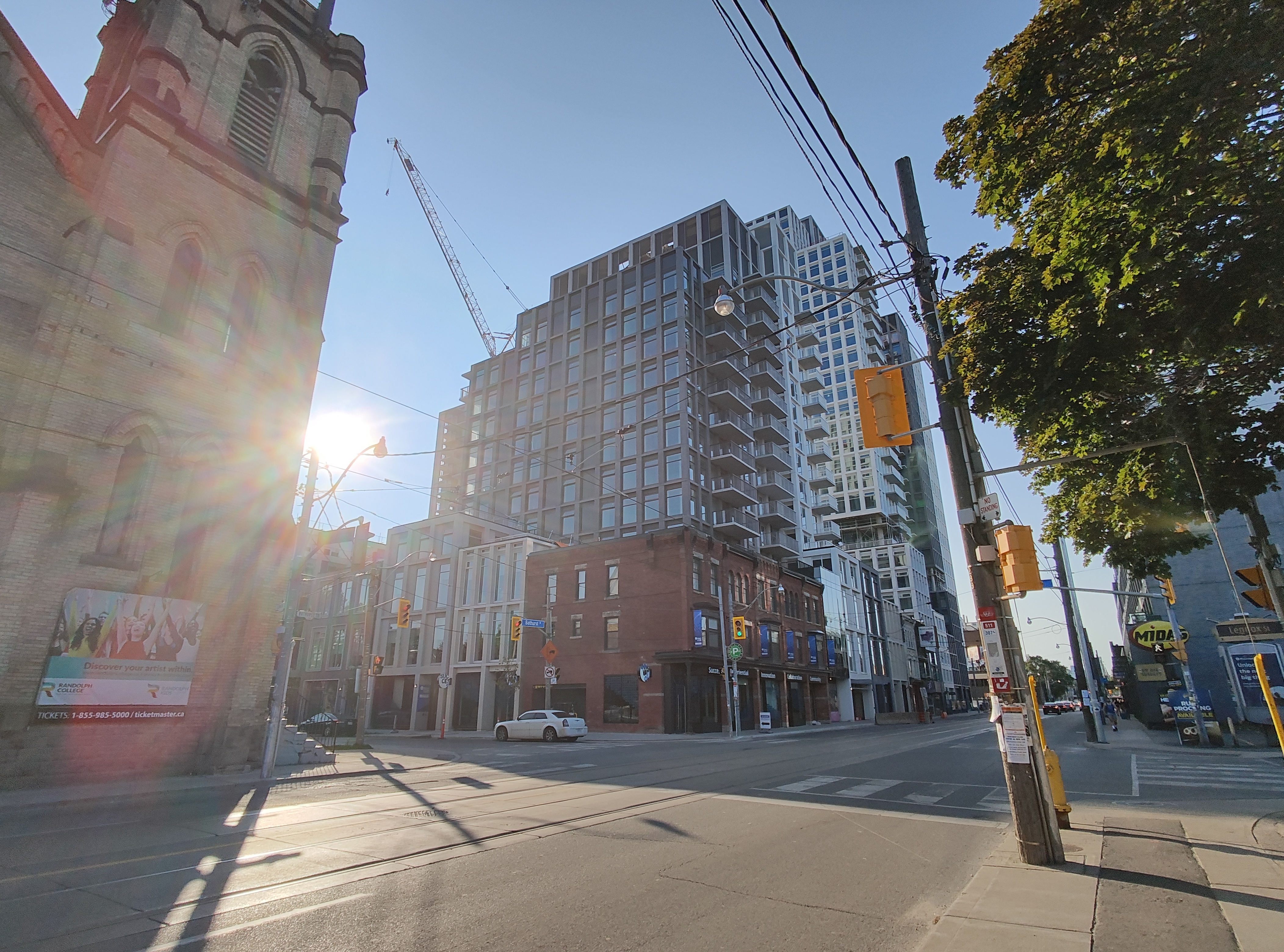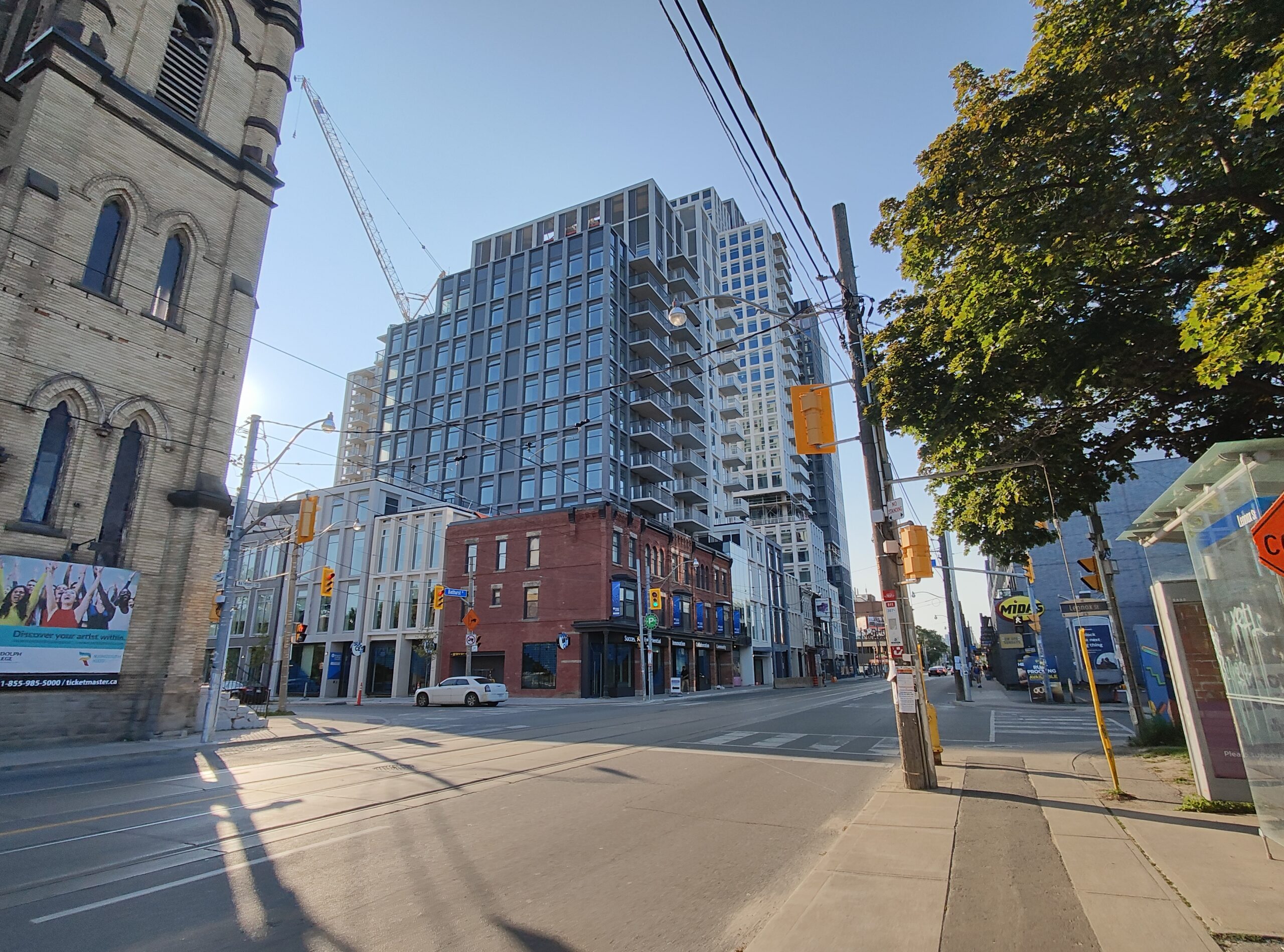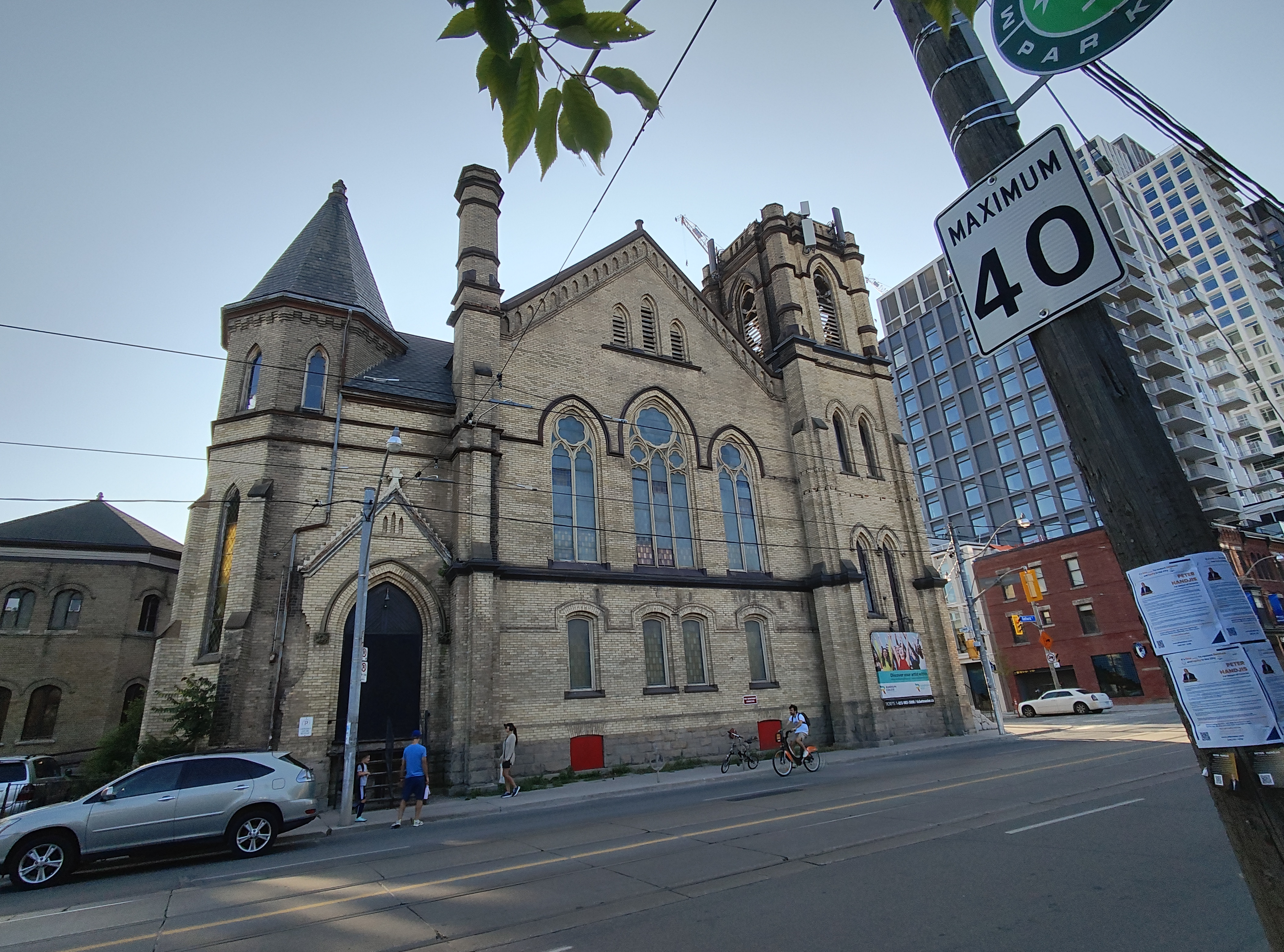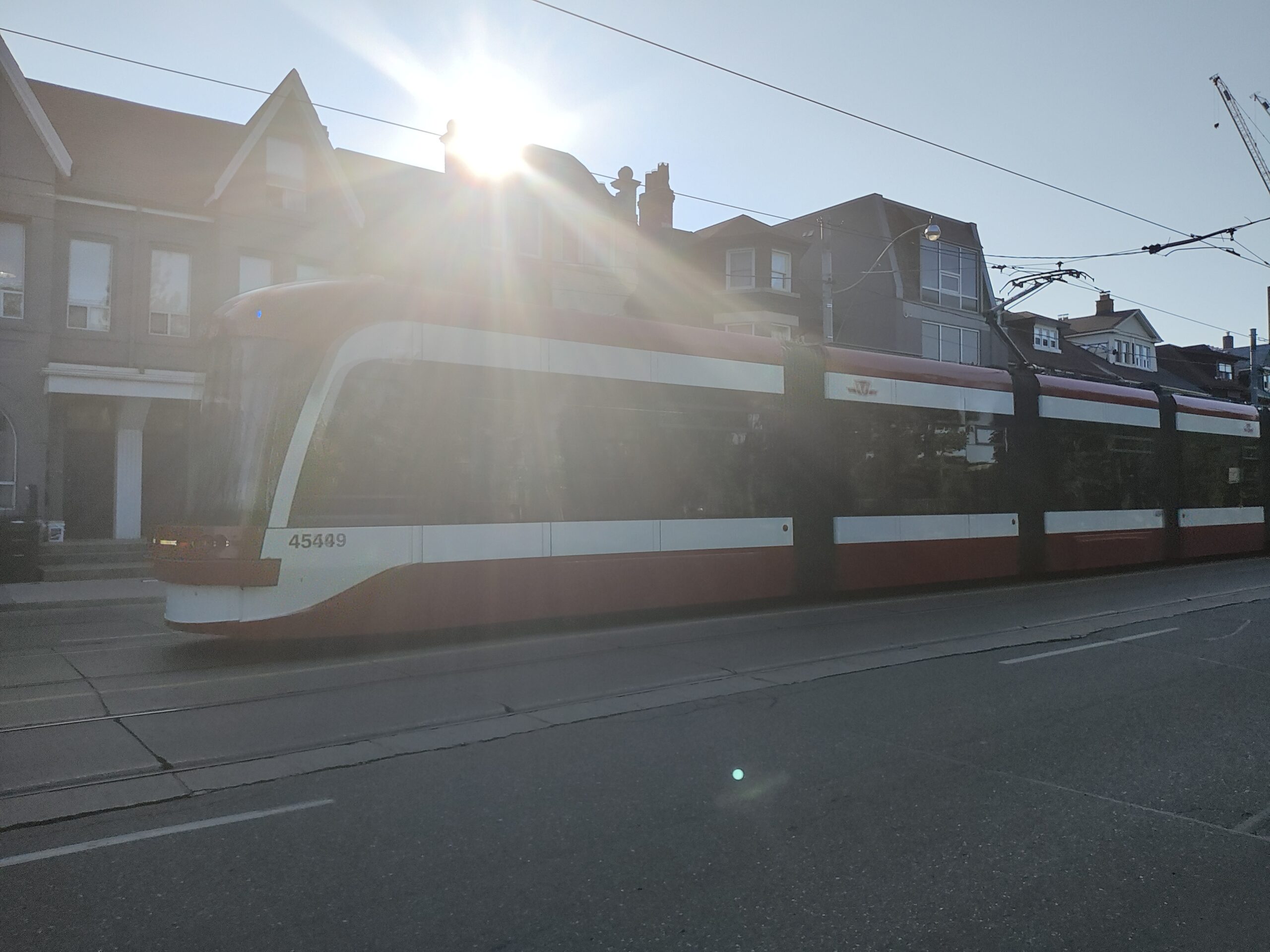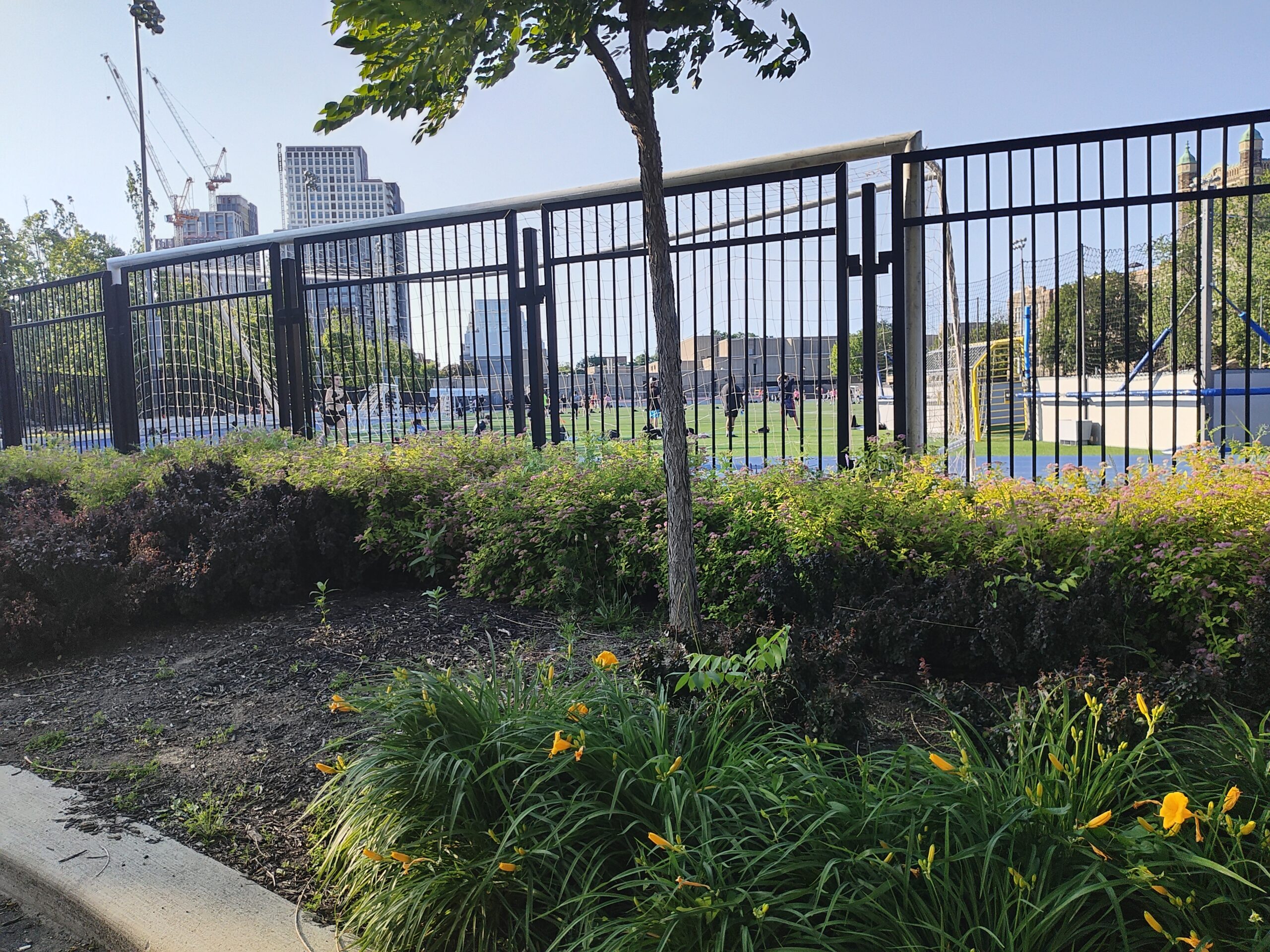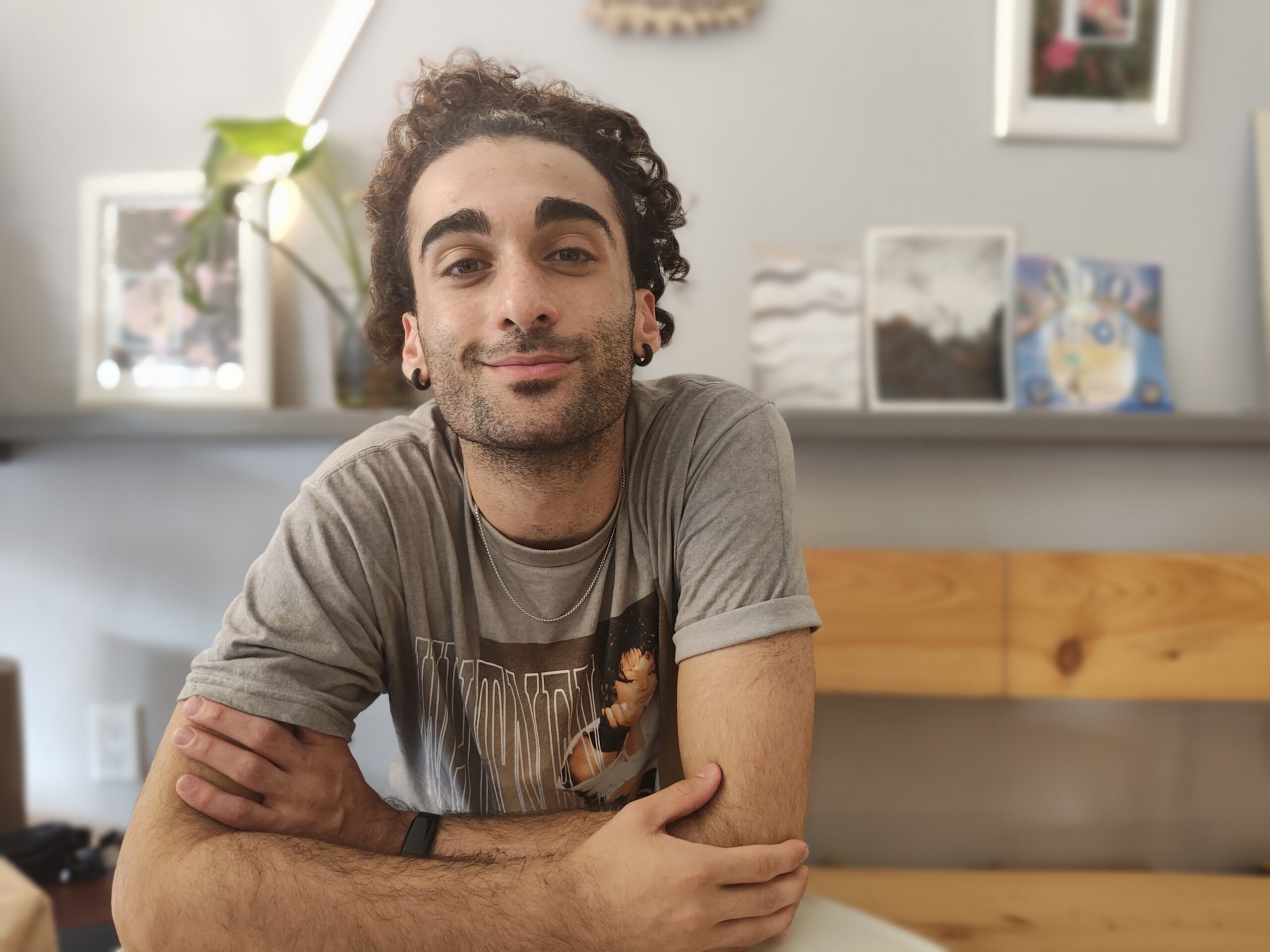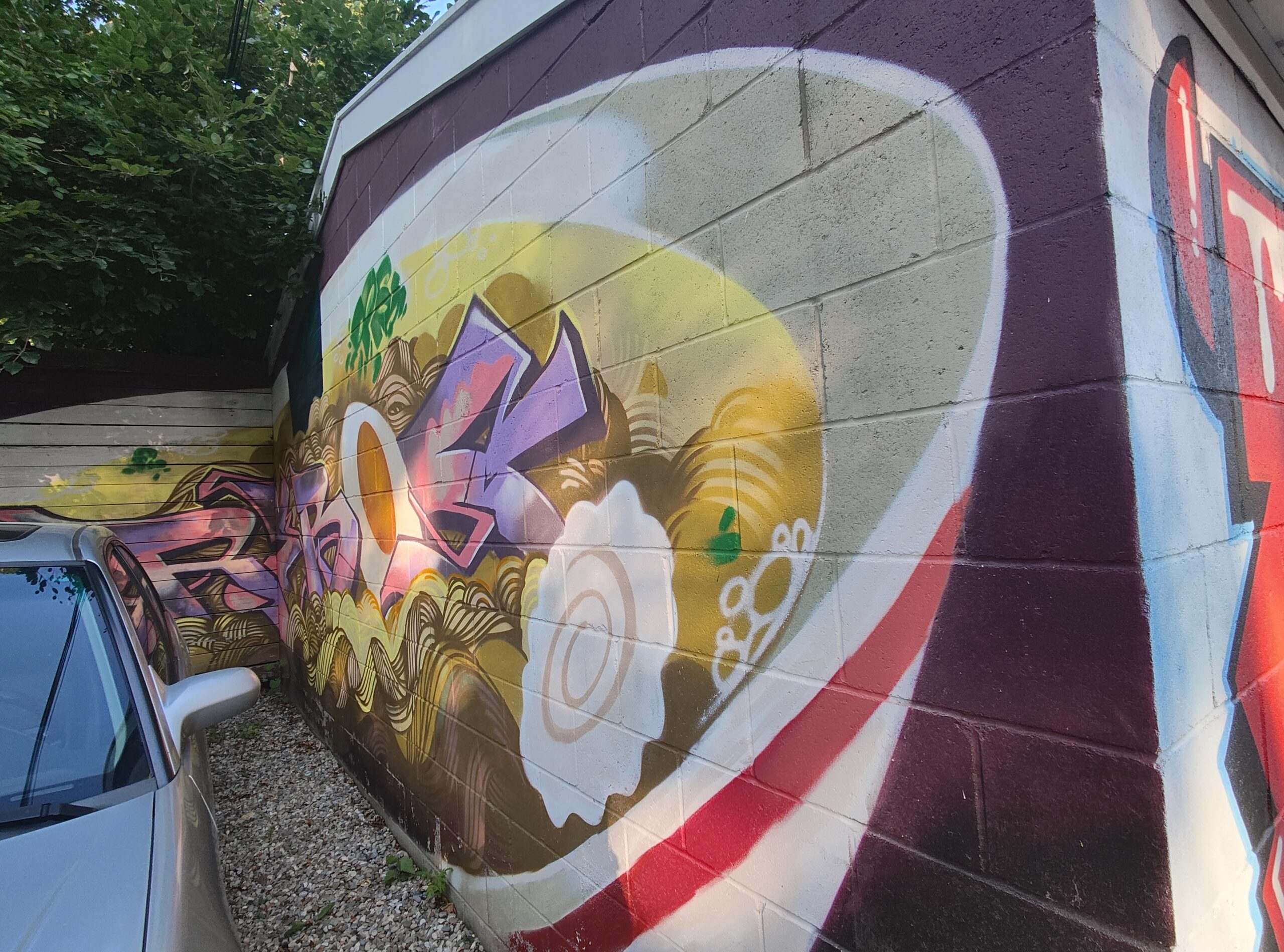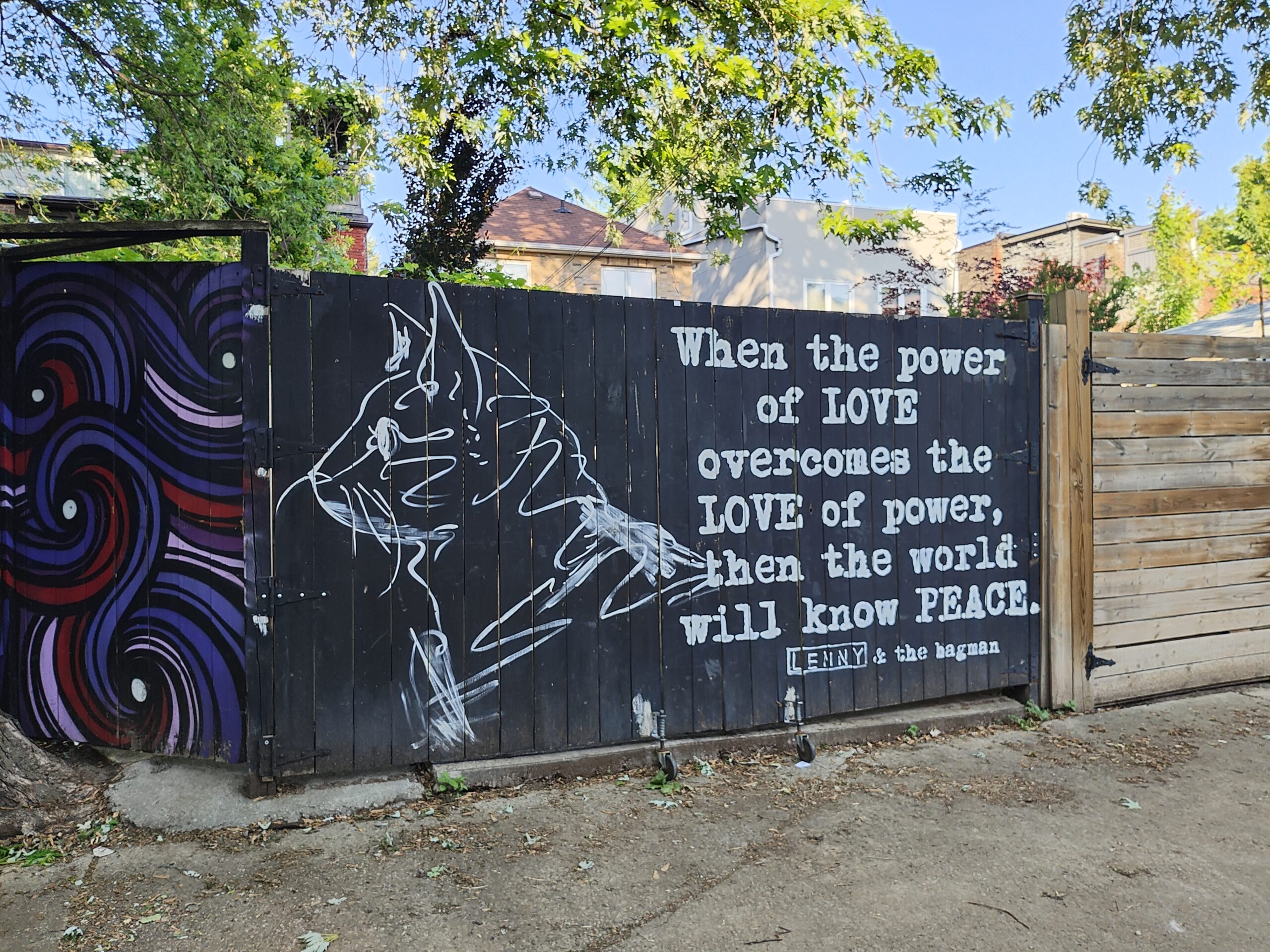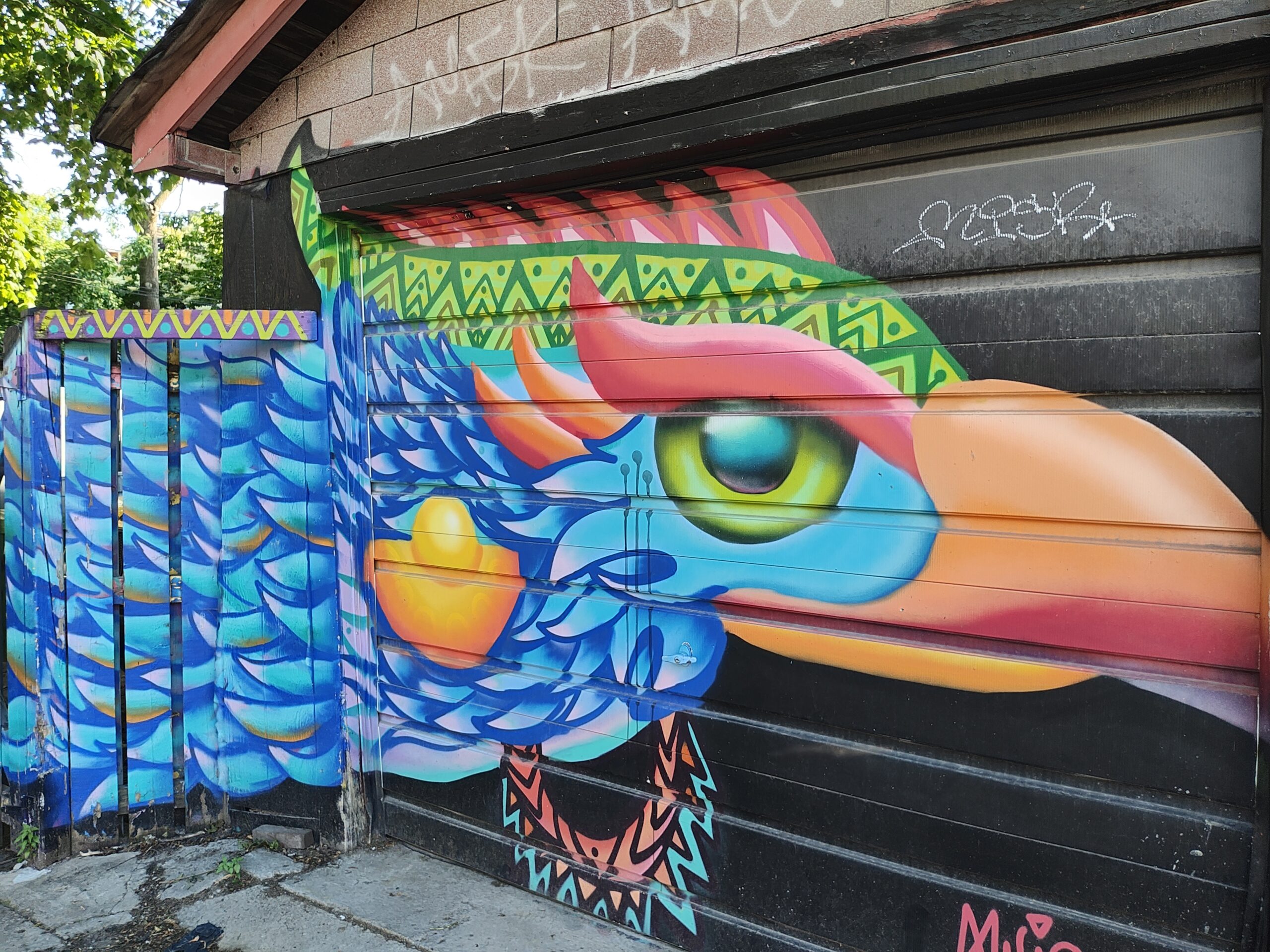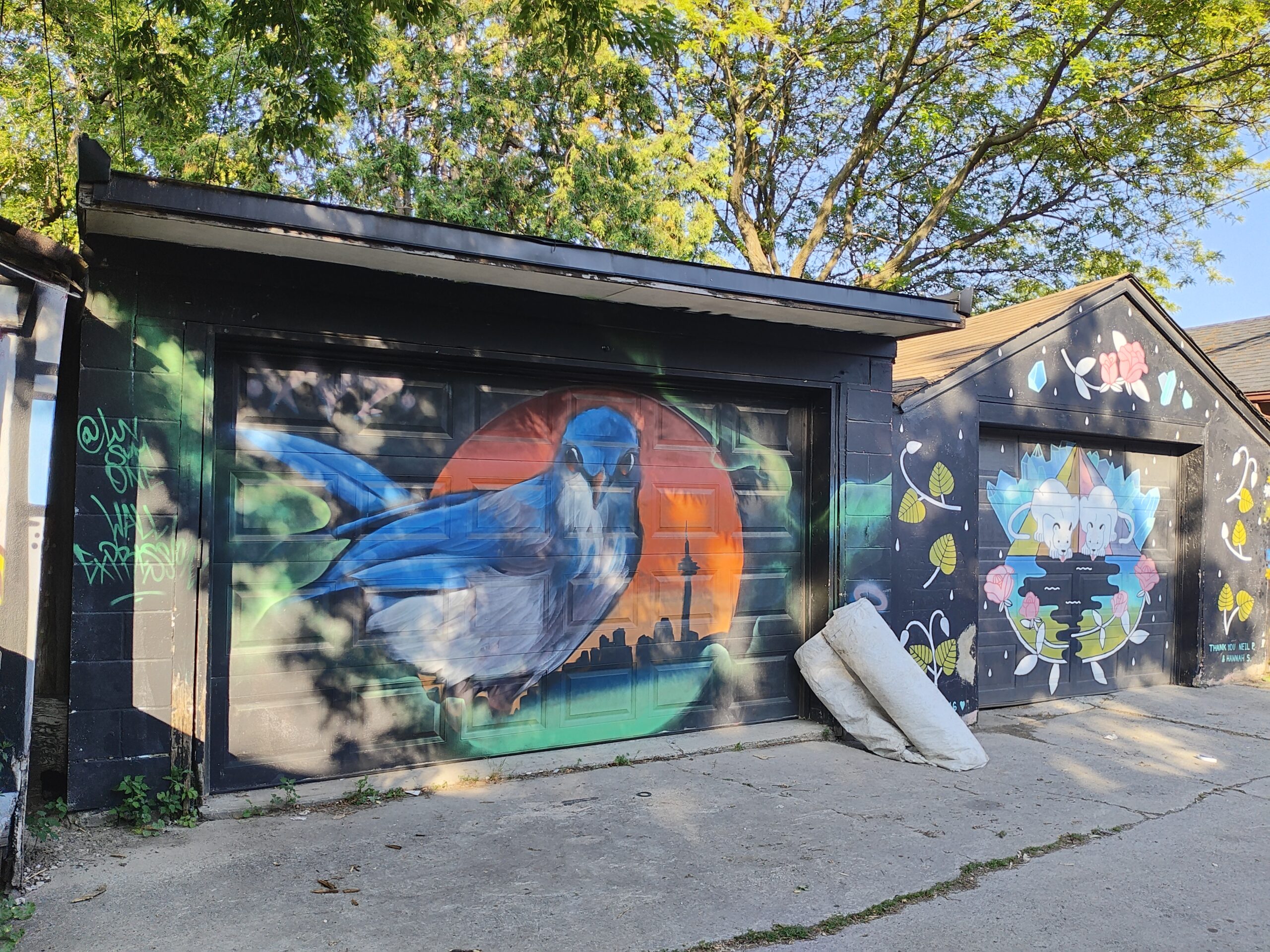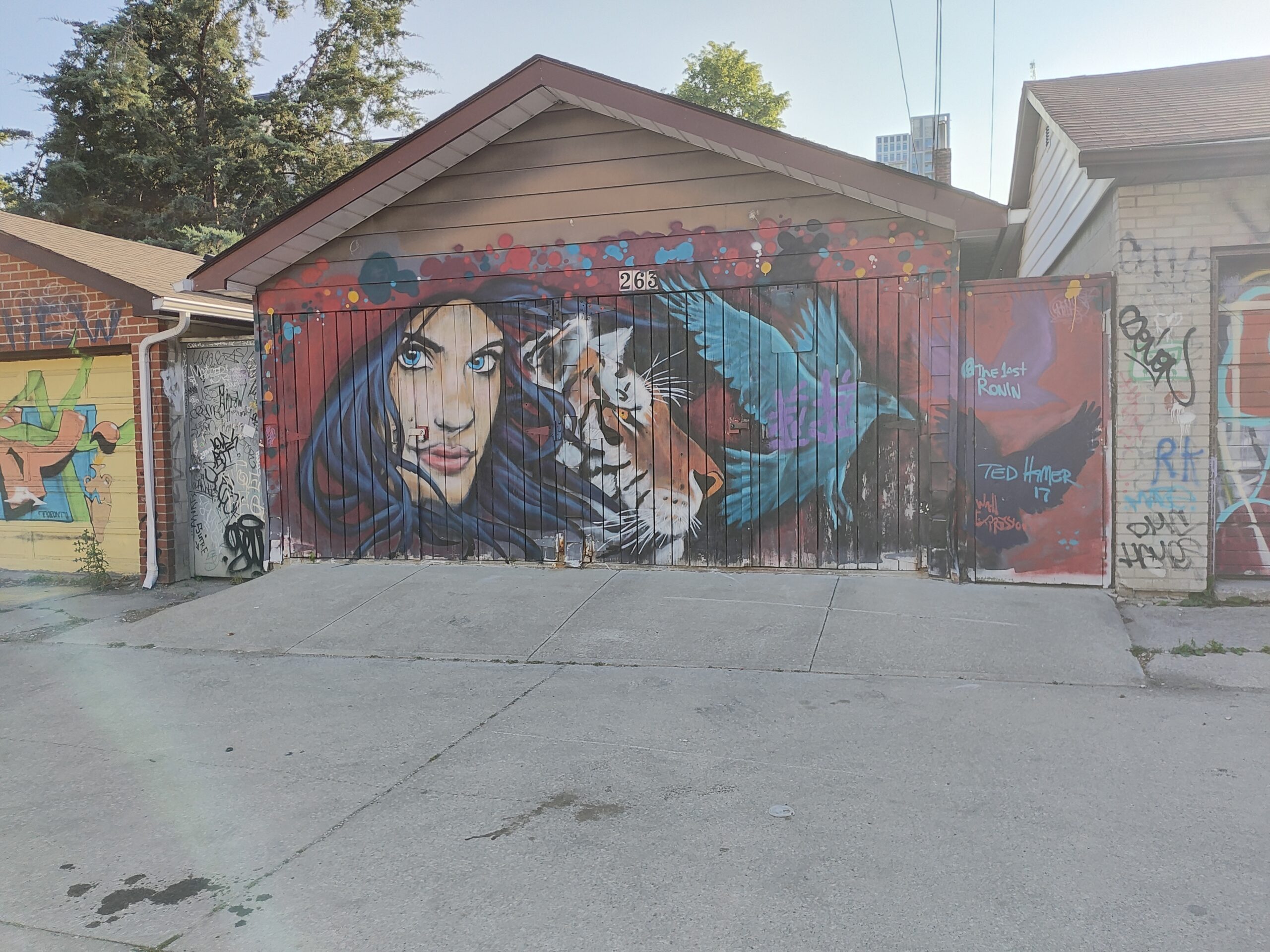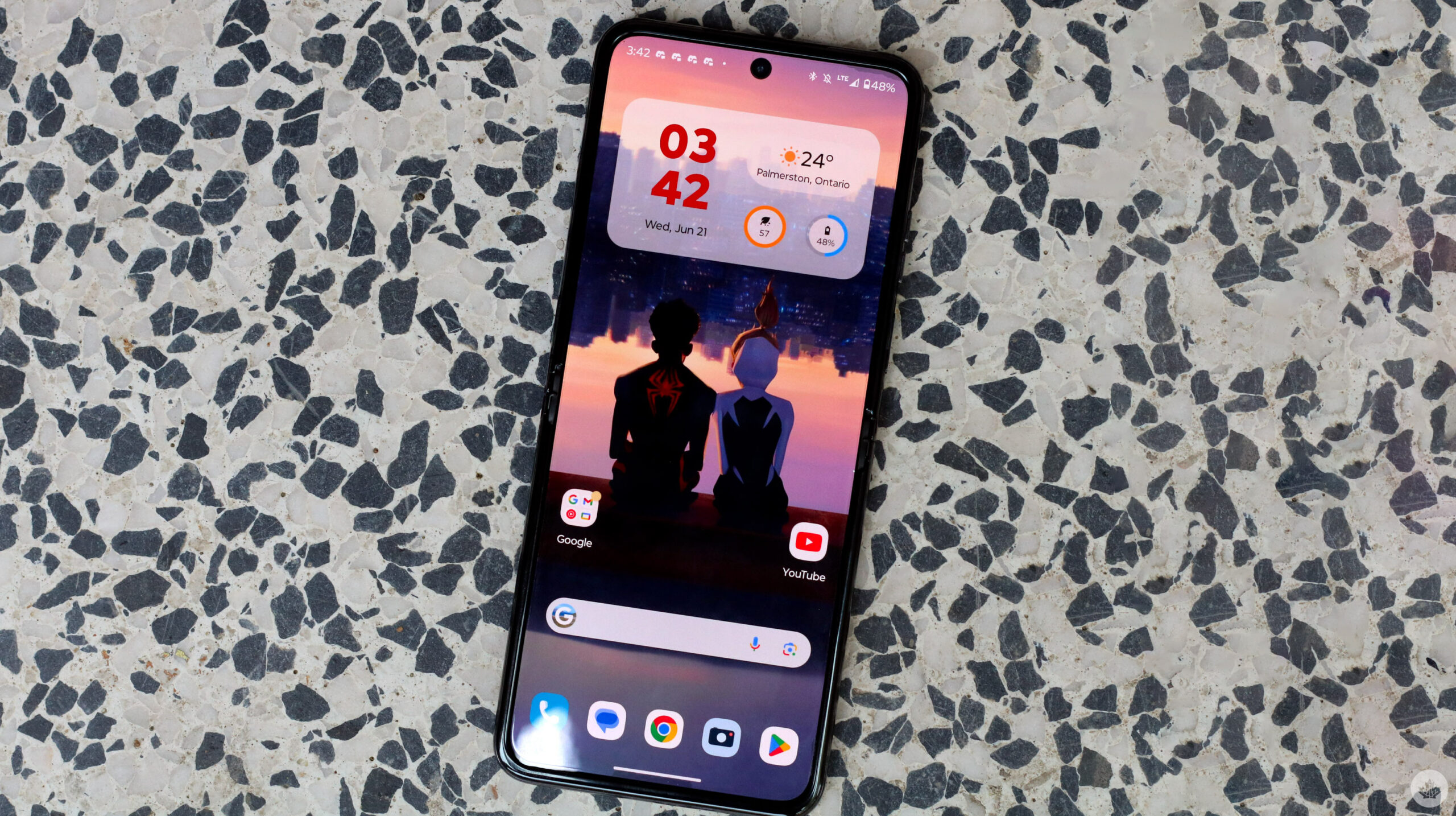
The Pros
- Great cover screen
- 165Hz refresh rate primary display
- Dope design
The Cons
- Meh camera
- IP52 splash resistant instead of IP68 waterproof
- Screen protector is pretty noticeable and you can't remove it
Over the past year, I’ve become more entrenched in the Apple ecosystem with iPhones, MacBooks, iPads and more. However, with my expertise in Android, I still switch over throughout the year to review devices like the Pixel 7 Pro, the Galaxy S23 Ultra and the Moto Edge+. While these three devices are all great in their own way, I still often miss using my iPhone.
But one phone that hasn’t made me miss my iPhone is the Galaxy Z Fold 4, and clearly, foldables are the way to my heart as I’ve now added a second phone to that list: Motorola’s Razr+.
The Razr+ isn’t the best smartphone on the block; it’s not even the best foldable handset out there (the Galaxy Z Fold 4 still takes this crown, at least until the Fold 5 arrives). Despite that, the device offers an undeniably awesome experience.
The Razr+’s front screen is the best of any foldable available in this form factor. With its 3.6-inch panel at a 144Hz refresh rate, it’s surprisingly handy. On top of the cover display, the phone’s 165Hz variable refresh rate primary display and the friendly Motorola user interface (UI), combine to make the Razr+ a device worth recommending to anyone interested in a folding phone.
Best flip cover screen
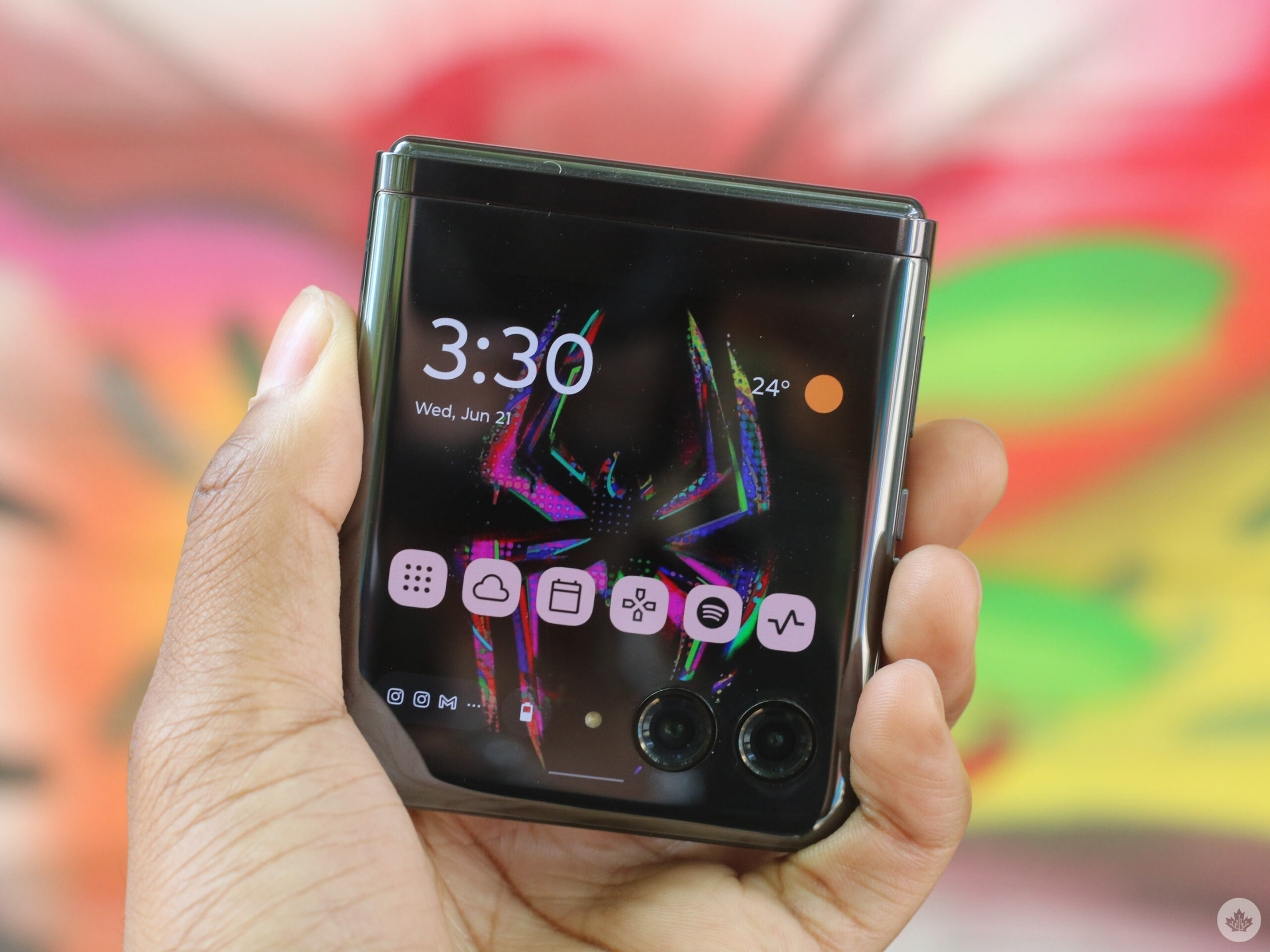
The Razr+ offers a 3.6-inch outer display, making it the biggest on any smartphone with a ‘flip’ form factor, like the Galaxy Z Flip 4 and the Oppo Find N2 Flip, for example. You can surprisingly spend a lot of time using this small screen. The front display includes several use cases, with my favourites being taking pictures and using it for Google Pay so I don’t have to open the handset. I also like playing Motorola’s mini-games, answering messages, doing a quick Google search, and so much more.
I love smartphones like the Razr+ that turn the front screen into a viewfinder, which is great for selfies. The foldable also has a fascinating feature that transforms the front display into a viewfinder, even when the handset is unfolded. This means if you’re taking pictures of your friend, they’ll also be able to see themselves. I’ll dive further into the camera experience later in this review.
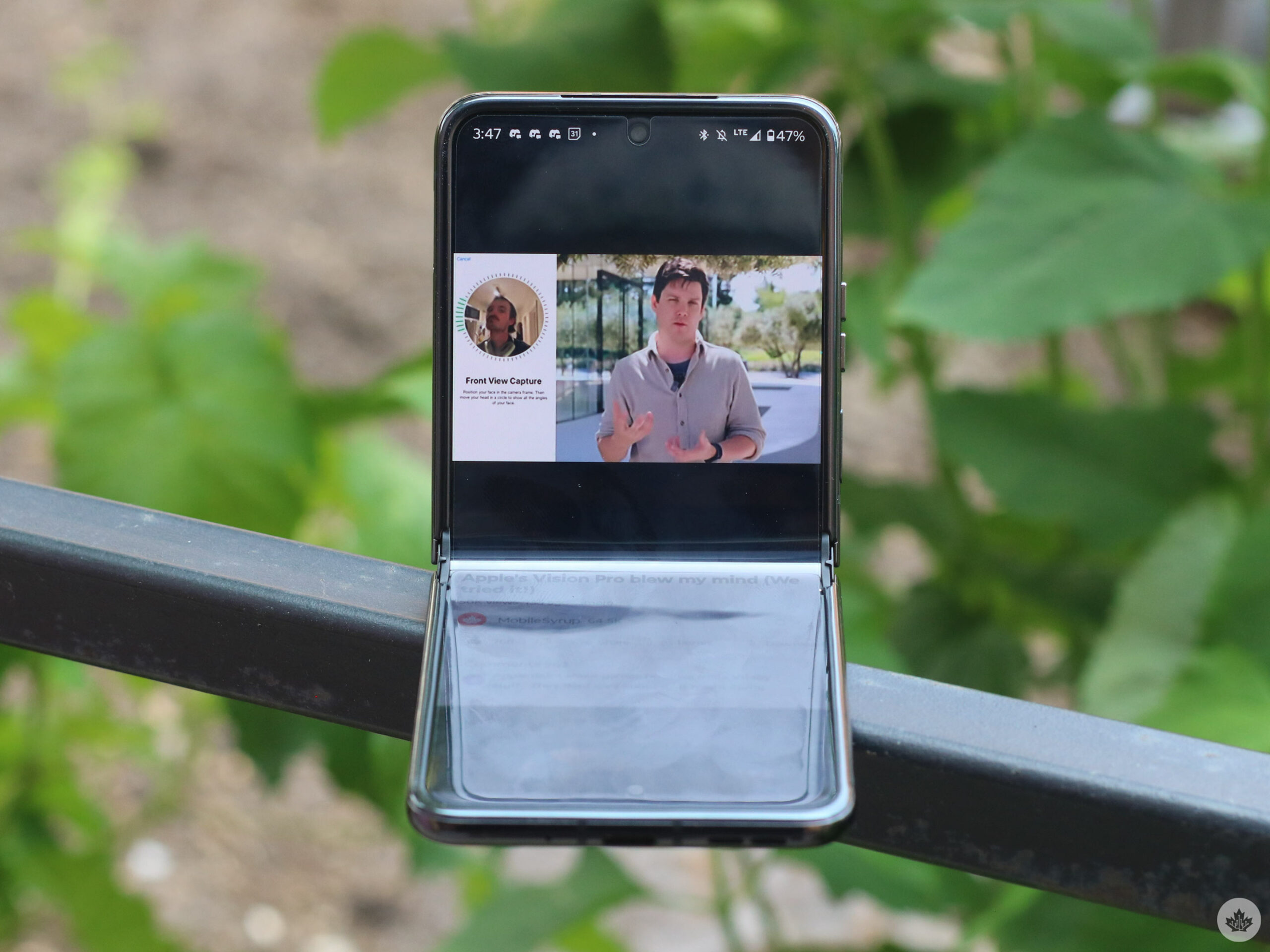
Circling back to the Google Pay part, the front screen makes it easier to access than on similar foldables. While you’d typically have to unfold the handset to use Google Pay, all you need to do on the Razr+ is unlock it and see that the transaction is approved on the front screen. Of course, using a candy bar handset offers a similar experience, but it’s convenient for this form factor.
Motorola has added games like Stack Bounce and Marble Mayhem, which are relatively simple offerings. You can play any game on the front screen, as you can open any app on the display, but I wouldn’t recommend it. I’ve tried playing Marvel Snap on this cover screen and experienced issues considering the game has a portrait orientation.
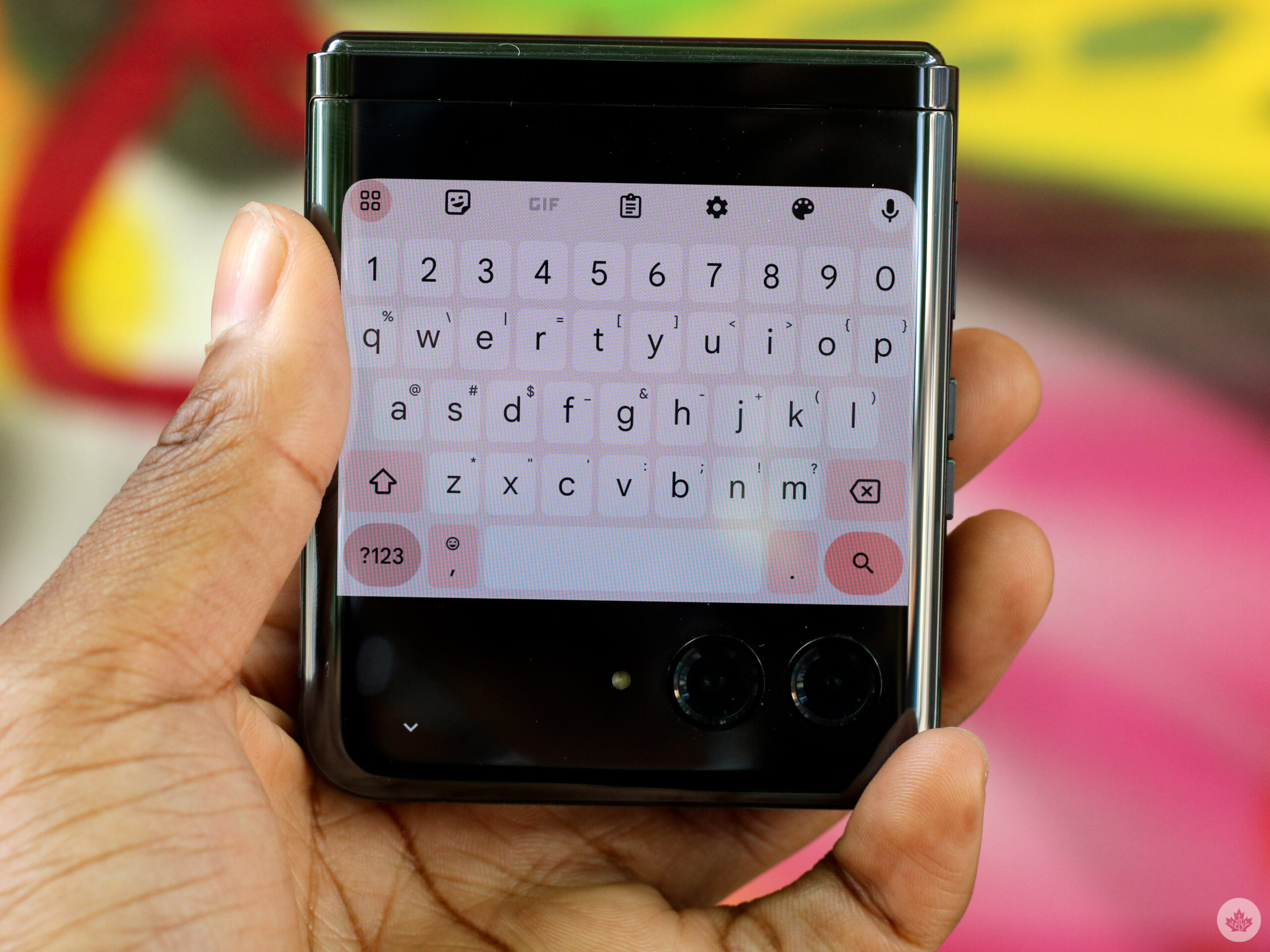
To my surprise, I’ve used the Razr+’s front screen to reply to messages from Instagram, Tinder, Google Messages and more. You get the full QWERTY keyboard covering the screen, and then when you’re done typing or checking what you said, you can quickly lower the keyboard. It’s not my favourite experience — I’d like to know what I’m typing — but it gets the job done. I also like scrolling through Twitter, Instagram, YouTube and Google searches with this display.
This is no insult to the phone, but its front display is the best aspect of the handset. While I’ll dive deeper into the battery later in the review, I also think using the cover screen helps avoid draining the relatively small cell, considering you’re using a smaller screen. I also like that you can choose whether the screen wraps around the camera sensors. I typically don’t enable this mode unless I’m watching a quick video on YouTube.
However, I like that this is an option and that it’s something no other company seems to be doing.
A flippin’ good design

Aside from the expansive cover screen, the front of the handset features two large camera sensors alongside an LED flash. You’ll also notice the dual-hinge system, which Motorola calls the Friction Hinge, as well as an aluminum frame and a Gorilla Glass Victus front and rear. I really like the matte finish on the Razr+; it’s fingerprint-proof and offers a smooth, almost sandpaper-like feel. I have the ‘Infinite Black’ model, and while it doesn’t pop or feel as good as the ‘Viva Magenta’ with its vegan leather rear, I’m still quite fond of it.
Opening up the handset, you’ll find its great 6.9-inch 2640 x 1080 pixel resolution pOLED screen with HDR10 support, a 22:9 aspect ratio, and a 165Hz refresh rate that can drop to 1Hz when you’re reading or looking at static images. I didn’t think I’d notice the difference between a 120Hz refresh rate and a 165Hz refresh rate, but the display feels buttery smooth. I’ve noticed it while scrolling through Instagram, Twitter and other apps.
“The ‘Friction Hinge’ feels firm and folds with as much resistance as you’d want from a foldable.”
There’s also a hole punch camera and a bezel surrounding the screen. If you had this bezel on a regular candy bar handset, you’d probably be annoyed by its thickness, but on a foldable, it’s not that bad. There’s also a horizontal crease through the middle of the handset. It’s not super noticeable, but it’s definitely there. As I’ve said before, if you can’t get over the crease, foldables aren’t for you yet.
There’s also a screen protector on the display. You can’t remove it or add your own screen protector on top of it, or you’ll void the warranty and possibly break the screen. This screen protector is more noticeable than what you’d see on the Galaxy Z Flip 4 but it’s not so noteworthy that it bothers me.

The handset feels thin but slightly thicker than the Galaxy Z Flip 4. Because of the aspect ratio, the Razr+ is very easy to hold with one hand.
Motorola says that both of its foldables were made to survive 400,000 folds. I can’t say whether it’s true yet, but I’ve folded it plenty of times and noticed no problems. The ‘Friction Hinge’ feels firm and folds with as much resistance as you’d want from a foldable.
I was a bit worried about the viewing experience considering the very tall aspect ratio and the low display resolution compared to other flagships, but the experience has been great. A bit of the screen is cut off at its sides when playing Marvel Snap, but everything looks great when you’re watching content. If you watch videos on YouTube or another app and expand to full screen, you’ll notice part of the video is cut off, but this typically occurs with most phones that feature a slightly odd aspect ratio.
Nitty Gritty
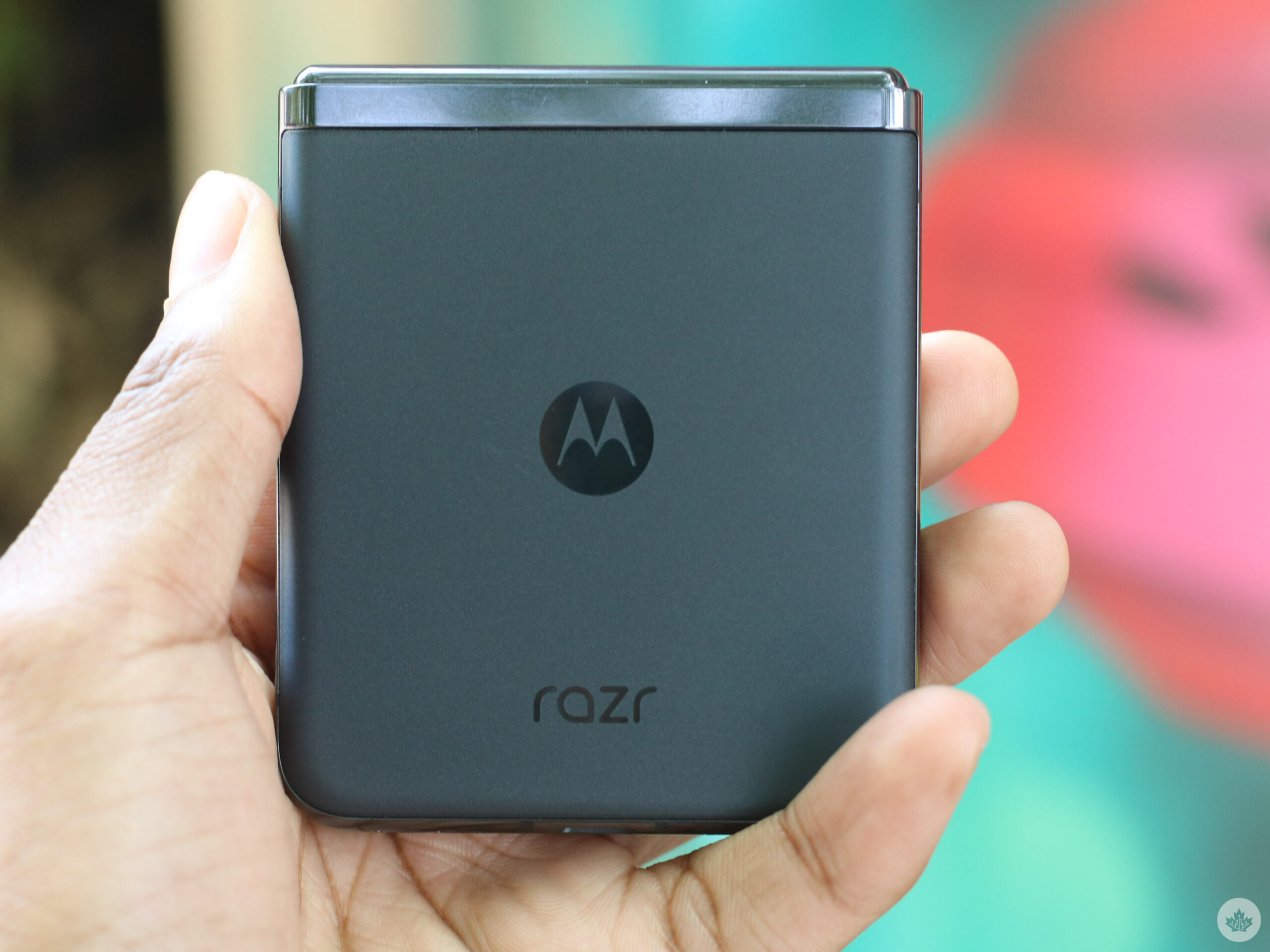
The Motorola Razr+ features Qualcomm’s Snapdragon 8+ Gen 1 processor with 8GB of RAM and 256GB of storage. The handset seems to lag a bit when I have too many apps open, and whenever I use it as a hotspot, it really starts to warm up – which doesn’t happen on my iPhone 14 Pro Max, but also occurs with my Pixel 7 Pro. The first issue is easily remedied by closing a few apps, and typically, it seems like this happens when I have more than 10 apps opened. The second concern is fixed by turning off your hotspot. Neither are huge issues, but they are definitely worth noting.
The Snapdragon 8+ Gen 1 is nearly a year old, but I don’t mind this shortcoming. I’ve used the Snapdragon 8 Gen 2 in Samsung’s Galaxy S23 Ultra, and the speed difference is negligible. Maybe if I played high-end games that require ray-tracing, I’d be upset, but that’s certainly not the case.
Benchmarking the handset with Geekbench 6 resulted in a single-core score of 1,721 and a multi-core score of 4,187, which is a lot better than the Z Flip 4 with the same processor and amount of RAM — it scored a single-core score of 950 and a multi-core score of 3,013. However, a low or high benchmark doesn’t necessarily make a phone bad or good and doesn’t have much bearing on real-world performance.
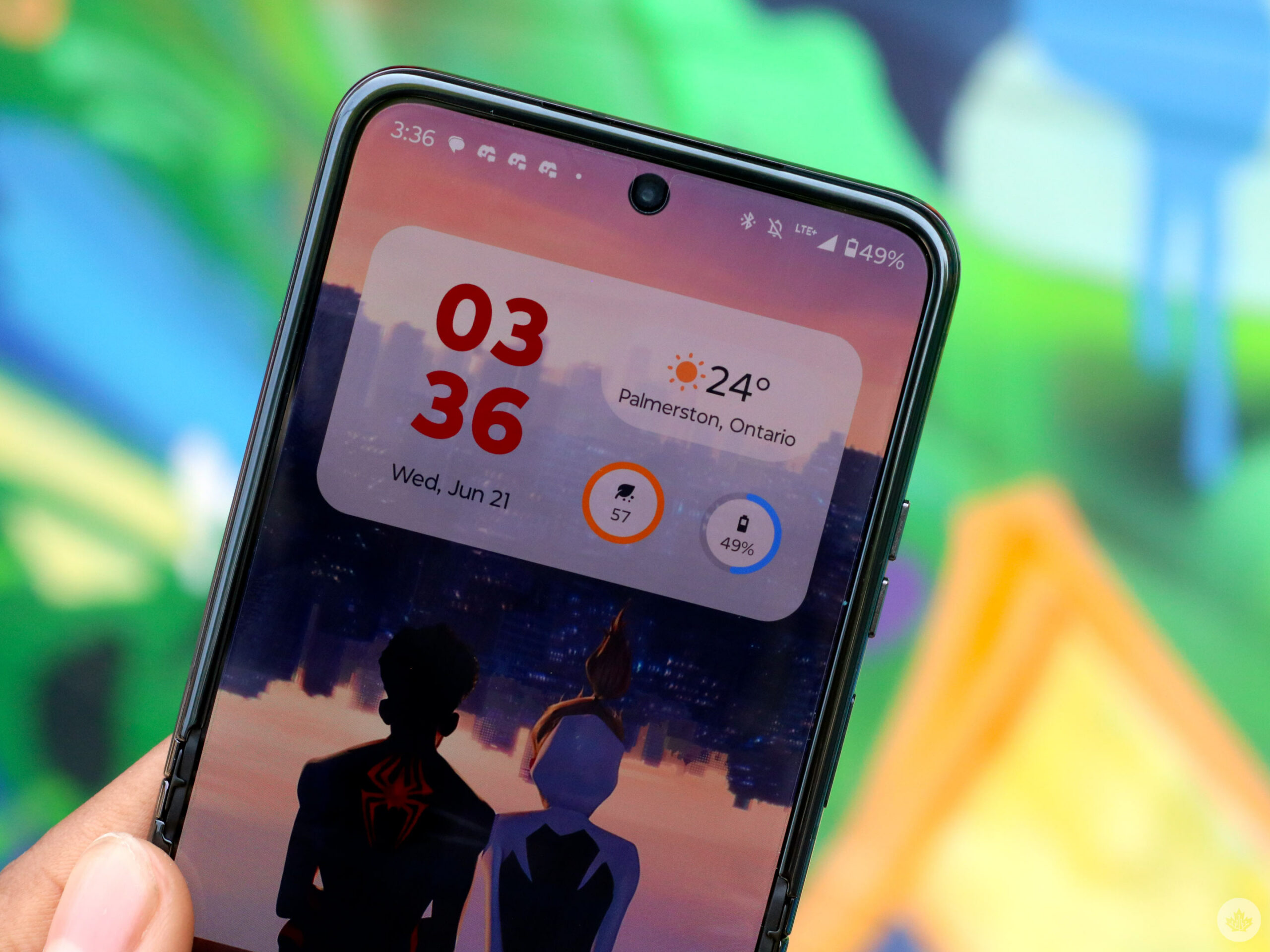
The handset also features a 3,800mAh battery, which might seem small for a flagship, but for the most part, it gets me through the full day with no issue. While it can survive to the next morning, I typically charge it as I know it won’t get me through even half of the second day. During my time with the foldable so far, I’ve mostly stuck to only using the Razr+ with my iPhone in my bag in case it dies or for shooting reels on Instagram. Throughout the day, I’ll play Marvel Snap, answer messages on various dating apps and Instagram, play around with the camera, watch videos on YouTube, and play music on Spotify. Typically my day starts around 9/10am and ends at roughly midnight.
As for its speaker, the Razr+ offers a Dolby Atmos dual speaker system. Using the Sound Meter app, I determined that music peaked at around 77 to 80 decibels, making the handset slightly quieter than the S23 Ultra. Like any other smartphone, you’ll still want to listen with headphones for a better audio experience. Unfortunately, the Razr+ only offers IP52 protection. This means it can handle splashes, but you can’t submerge it in water, so be careful when texting on the toilet.
Motorola’s UI is pretty nice. It doesn’t have a lot of bloatware, and it’s quick and easy to navigate. It features several customization options and allows you to change the front display exactly how you want. Motorola also offers several easy-to-use gestures, like taking a screenshot by tapping three fingers on the screen, making a chopping motion to turn on the flashlight, twisting the phone when folded to open the camera, and raising your hand at the viewfinder to take a timed selfie. Motorola has been pretty bad in the past about updates, unfortunately. The Razr+ will have three years of OS updates and four years of bi-monthly security patches. Hopefully, Motorola will stick to its promise.
Unfortunate camera

Finally, we’re at the worst part of the handset, its two cameras. The Razr+ features a 12-megapixel primary shooter with an f/1.5 aperture and a 13-megapixel ultrawide with an f/2.2 aperture and 108-degree angle lens. The pictures aren’t horrible, but they are not as good as what’d you get from other flagship smartphones.
In shots, colours pop, and images aren’t over or under-saturated, but the main issue I have is the device’s ability to pick up details in pictures. Leaves on trees, brickwork, and even my facial hair become an over-processed mess. There’s also a lot of digitalization, even in well-lit photos.
These pictures are fine if you’re posting to Instagram or Facebook, but they aren’t as good as what you can shoot with other smartphones, unfortunately.
My biggest nitpick is the overexposing of my darker skin. I love taking selfies, especially with a phone that uses its cover screen as a viewfinder; however, considering the overexposure, I haven’t done that as much as I would normally. This is typically a notable issue with devices not made by Google, Samsung or Apple, and it’s clear as day here. Darker skin is brightened in photos, making them not true to life. Motorola needs to put in more effort, like Google with its ‘Real Tone,’ and work on taking samples of people with various skin tones, as this is problematic.
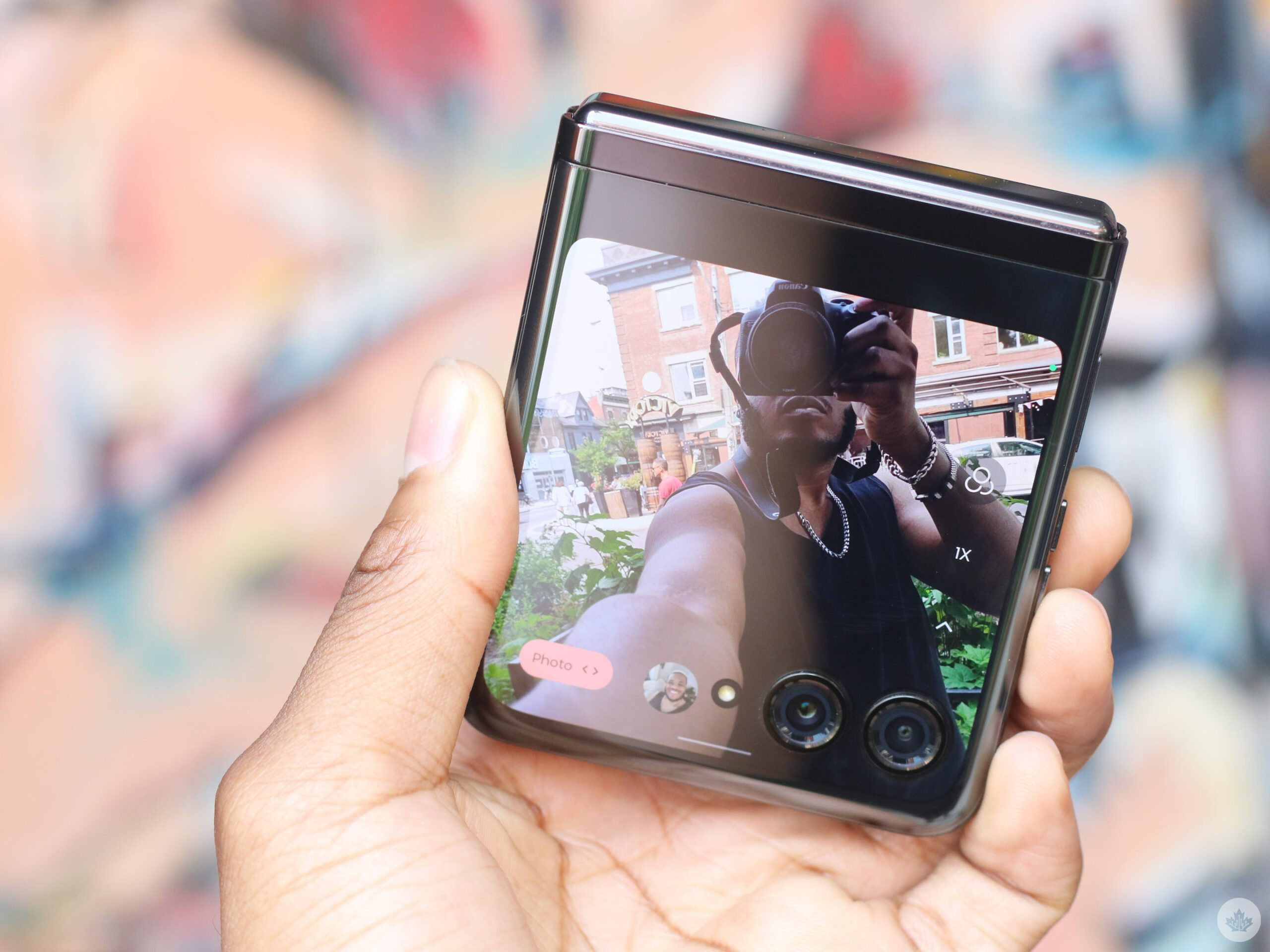
Low-light imagery is also subpar on this handset. Considering the issues with processing details in optimal lighting, it’s not shocking that there are also issues with low-light performance. These images aren’t too bright and lack a lot of details as well.
While I’m no video expert, I did take some video footage while clubbing, and it seemed surprisingly stable despite my dancing while taking the video. It’s cool you can hold the phone like a camcorder while taking pictures and videos.
I flippin’ enjoy this phone
The Razr+ is a good handset thanks to its large cover screen, day-long battery, and all-around good experience, but unfortunately, its camera isn’t as good as its main competition, the Galaxy Z Flip 4.
Despite the unfortunate camera experience, I think most people won’t have many issues with the foldable, especially if you're upgrading from a two or three-year-old phone. And as I mentioned, the camera is usable if you’re just posting pictures just to Instagram or Twitter.
I’ve been thoroughly enjoying my time with the handset. I like how it feels in my hand and how small it is folded in my pocket. I also really like that you can do so much with the cover screen, and that it brings another element to the handset that makes it a perfect flip-style foldable, especially when compared to the Galaxy Z Flip 4. Its battery could be better, but it's fine, and I’m not typically left with a dead phone before the end of the day.
The Razr+ may not be the best or most affordable smartphone on the market, but this flip phone is worth considering if you’re in the market for a foldable one.
The handset costs $1,299 outright, but it’s also coming to carriers. It’s $50 more expensive than the base Galaxy Z Flip 4, but with that, you get a better front experience, twice the storage and, ultimately, a phone you’ll enjoy.
"The Razr+ may not be the best or most affordable smartphone on the market, but this flip phone is worth considering if you’re in the market for a foldable one"
MobileSyrup may earn a commission from purchases made via our links, which helps fund the journalism we provide free on our website. These links do not influence our editorial content. Support us here.

